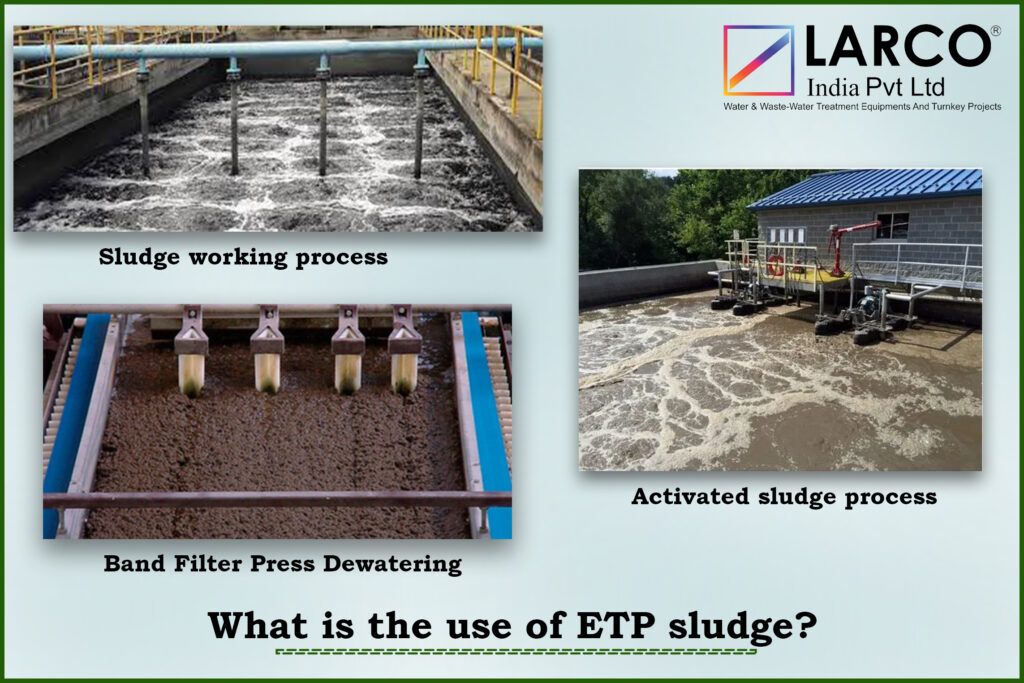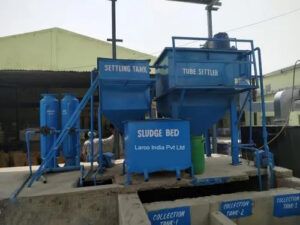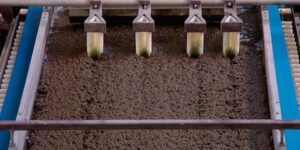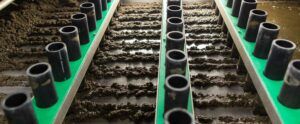What is the use of ETP sludge?
Definition of ETP
The eco-warrior who transforms the water that exits our homes and businesses into something Mother Nature would be proud of is the effluent treatment plant. See, water that has been used for many purposes—be it for an industrial operation or your daily shower—isn’t quite pure.
Before being released into rivers or other bodies of water, industrial wastewater is treated by an ETP, which is essentially a sophisticated system, to remove pollutants and poisons. Businesses that produce wastewater with various chemicals, suspended particles, and occasionally hazardous elements should pay particular attention to this.
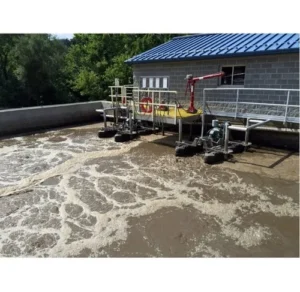
I. Understanding ETP Sludge
Definition of ETP Sludge
Let’s start with the basics. ETP stands for Effluent Treatment Plant, and the sludge it produces is essentially the byproduct of treating industrial wastewater. In simpler terms, when factories and industries clean up their water before releasing it back into the environment, what’s left behind is what we call ETP sludge.
Understanding ETP sludge composition and characteristics is crucial to developing effective plans for its treatment, disposal, or even potential resource recovery. Because of this, firms hoping to integrate environmentally responsible and ethical waste management practices alongside environmental compliance must grasp the complexities of ETP sludge.”
Composition of ETP Sludge
- Solid components: The solid components come first. Imagine that little bits are floating about in the gummy mixture; picture the sediment collecting at the bottom of your grandmother’s homemade soup. These solids are a mixture of debris from the wastewater treatment process, fragments of organic materials, and chemicals. In essence, it is the cleaning procedure’s leftover material.
- Liquid components: It’s not all sticky and viscous, unlike what you may believe. ETP sludge contains a liquid component as well. Water that was not entirely separated from the solids during the treatment procedure is carried out in this part. You have a two-layered sludge with coexisting liquid and solid components.
- Chemical elements: There is a chemical fingerprint to ETP sludge; it is not just a random mixture. Phosphorus, nitrogen, and heavy metals are among the elements we are discussing. Before being concentrated in the sludge, these components were present in the industrial wastewater. Although many substances may be advantageous when used in moderation, high concentrations may pose a threat to the ecosystem.
Characteristics of ETP Sludge
- Physical properties: texture, colour, and More
First up, let’s talk about the physical aspects of ETP sludge. Imagine a gooey, thick substance with a texture that’s a mix between pancake batter and creamy peanut butter. The colour can vary; it might be anything from earthy browns to murky greens, depending on what it’s been soaking up. Picture a cross between melted chocolate and swamp water—charming, right?
Now, let’s talk smell. Brace yourself; it’s not exactly a field of flowers. ETP sludge can have a distinct odour, kind of like a blend of earthiness and industrial vibes. Not exactly a candle scent, but it’s a part of what makes ETP sludge, well, ETP sludge.
- Chemical properties: The Elemental Dance
Moving on to the chemical side of things, it’s like the sludge’s own little periodic table party. We’ve got elements like nitrogen, phosphorus, and various heavy metals joining the mix. It’s like the sludge is holding onto these elements after its spa day with industrial wastewater. While a pinch of these elements is natural, too much can be a bit like spicing up your soup—moderation is the key!
- Biological Properties: Microscopic Life in Action
Now, let’s zoom in on the microscopic universe within ETP sludge. Yes, it’s got a whole ecosystem going on! Microorganisms, bacteria, and other tiny life forms are doing their thing in there. It’s like a bustling city of tiny creatures, breaking down the organic matter and playing a crucial role in the sludge’s transformation. Think of it as a microscopic cleanup crew with a bustling community.
II. Use of ETP Sludge
Agricultural Applications
- Soil conditioning: One of the amazing benefits of ETP waste is its ability to regenerate our soil. Consider it a spa day for the planet. The organic content and nutrients in the sludge help to improve soil structure and texture. It improves water retention and aeration, giving the soil a comfortable home for plant roots. ETP sludge, in a nutshell, functions as a natural conditioner, transforming tired, depleted soil into a healthy paradise for plants.
- Nutrient content: Let us now discuss the nutritional benefits that come with ETP sludge. This sludge is a treasure trove of critical nutrients for plants, not just a random combination. Nitrogen, phosphorus, and potassium, the plant’s holy trinity, are abundant. These nutrients become readily available to plants when we apply ETP sludge to the soil, acting as a green multivitamin for our crops. It’s similar to providing them with a nutritional boost for optimal growth and development.
- Impact on crop yield: The big kicker is the effect on agricultural yield. According to research, adding ETP sludge waste to agricultural operations can dramatically increase crop output. Improved soil structure and nutrient availability result in healthier, more vigorous crops. Farmers and the environment benefit from increased yields while reducing the demand for synthetic fertilisers.
Environmental Benefits
- Reduction of waste: Ever wondered what happens to all the icky stuff filtered out during industrial wastewater treatment? Well, that’s where ETP sludge steps in as a waste warrior. Instead of letting those residues become a burden on landfills, industries are repurposing them into a valuable resource. By converting waste into something useful like ETP sludge, we’re not only cutting down on the amount of waste piling up but also finding a clever way to give it a second life.
- Sustainable resource utilisation: plants that treat wastewater are leading the way in adopting the circular economy. Imagine a society in which water is recycled and used again rather than merely being used and thrown away. These plants turn sewage into a valuable resource, almost like magical alchemists. They guarantee our communities have access to clean water constantly by collecting and treating wastewater.
- Using Bioenergy’s Potential: Have you ever considered the potential that lurks in your sewage? Undoubtedly, wastewater treatment plants have! Many people are now using anaerobic digestion to harness the potential of bioenergy. Sewage contains organic debris that is broken down by microorganisms, yielding biogas as a byproduct. The plants that produced the biogas are thereafter able to use it as a sustainable energy source.
- Rich in Nutrient Byproducts: Wastewater treatment plants generate more than just energy. Known as biosolids, the nutrient-rich wastewater treatment wastes are a boon to agriculture. These nutrient-rich materials can be applied as a natural fertiliser to improve soil quality and encourage strong plant development. Sustainable agriculture and wastewater treatment both benefit from this!
III. Where Does Sludge Generate in ETP?
Let’s get down to the specifics of wastewater treatment, starting with the ETP (Effluent Treatment Plants), where that infamous sludge originated. Get ready for a new perspective on the origins of this sleazy company!
Imagine this: Your home is abandoned when your regular trash disappears. But have you ever wondered about its final destination? Now for the unsung hero of waste management: the effluent treatment plant.
Now here’s the twist: ETP sludge doesn’t just appear; it results from the ETP’s constant fight against contaminants. Contaminants and solids are trapped in the wastewater as it passes through the treatment process, creating the infamous sludge. The main and secondary therapy phases are where the major action happens.
Grit and big particles, which are heavy hitters in the first treatment, bow down and form the first layer of sludge. But there’s still more! The microbial workforce feasts on organic contaminants in the secondary treatment, creating a second act of sludge in the process.
That’s right, sludge isn’t a cunning visitor; rather, it’s a consequence of ETP sludge’s enormous efforts to clean our wastewater.
Primary Treatment
We’re putting on our virtual diving gear today to examine the primary treatment and the initial stages of the cleansing procedure. Consider it the first part of the wastewater’s superhero transformation, leading up to more sophisticated treatments. So grab a seat, and let’s dive into the world of sedimentation and big solids removal!
1. Removal of large solids
The sewerage system of a major city is similar to a busy highway in that it carries a variety of undesirable passengers, such as plastic, leaves, and other heavy trash. Eliminating these unattractive passengers is the primary priority in the field of wastewater treatment.
Imagine an enormous screen positioned to capture the major participants. This is exactly what occurs in primary therapy when large solids are removed. As bouncers, screens, or barracks, make sure only the liquid passes through the entrance gate. It is comparable to a club bouncer, but for wastewater!
Why is this a critical step? In other words, clearing out these big solids not only keeps downstream machinery from becoming damaged but also makes the treatment process run more smoothly and effectively. It’s similar to organising your space before beginning a thorough cleaning; both are necessary for a flawless outcome.
2. Sedimentation
With the heavyweights now out of the way, let the minute details of sedimentation take centre stage. Imagine a peaceful pond; the still surface conceals the commotion below. Sedimentation functions similarly.
The water in the sedimentation tank slows down, allowing suspended particles—both inorganic and organic—to sink to the bottom. For wastewater, it’s similar to having a tranquil meditation session when it can release the contaminants it has been holding onto.
As gravity takes over and pulls these particles downward, magic happens. After that, the purified water gracefully rises to the top, prepared for the subsequent stage of treatment. This procedure not only gets rid of undesirable particles but also sets up the secondary treatment stage, which is where the real superheroes of microbiology come into play.
Secondary Treatment
1. Biological processes
A hive of microbes that never stop striving to decompose the organic materials in wastewater. The biological processes involved in secondary treatment are mostly driven by these microscopic heroes, who serve as nature’s cleanup team.
Wastewater carries a mixture of contaminants, including organic materials, into the secondary treatment stage. In this stage, we use the ability of bacteria and other microbes to eat these contaminants and change them into less dangerous materials. It resembles a fine dining experience for tiny organisms!
This organic process—often called “activated sludge”—creates a microbial dance in which the bacteria decompose the contaminants and generate more sludge as a result. Our wastewater choreographers maintain a careful balance by ensuring that everyone is moving in unison.
2. Aeration tanks
Let us now highlight the aeration tanks, which are the actual venue where the microbial dance takes place. These tanks resemble the wastewater treatment plant’s opulent ballrooms.
We add oxygen to the mixture in these tanks to provide an aerobic environment that promotes the growth of our microbial performers. Visualize the aeration tanks as active dance floors filled with swirling oxygen bubbles that invigorate our microbial dancers.
The microorganisms can break down contaminants more effectively because of the aerobic conditions in the tanks. It’s a rhythmic, dynamic process that guarantees our wastewater is thoroughly cleaned before it travels further.
The microbes grow as they break down organic waste, creating what is known as “activated sludge.” This sludge is a mixture of superhero microbes and the leftovers of the contaminants they have eaten. But don’t worry—our treatment plant gurus have a strategy for handling this waste.
Tertiary Treatment
1. Filtration
Consider your water flowing through a high-tech sieve, where every contaminant is collected and retained before reaching your glass. That is the filtration magic, the hidden hero of pure water. This procedure brings water purification to the next level during tertiary treatment.
Filtration is the process of removing residual particles, microorganisms, and toxins using various materials, such as sand, gravel, and activated carbon. It’s as if we’re giving our water a final spa treatment before it gets to our homes, to ensure it’s as pure as possible.
What’s the best part? Filtration is a natural procedure that closely resembles Mother Nature’s own washing methods. It is both environmentally friendly and extremely effective, providing us with water that not only quenches our thirst but also respects the environment.
2. Disinfection
Now that our water has been thoroughly cleaned by the filtration spa, it’s time for the second act: disinfection. This is when we say our final goodbyes to any leftover bacteria that may have survived earlier stages of treatment. We want our water to be as safe as it is refreshing, after all. Disinfection is often accomplished by the use of chlorine, ozone, or ultraviolet (UV) radiation—potent agents that eliminate any leftover nasties. Consider it the superhero phase of water treatment, in which invisible hazards are vanquished to ensure that the water is superhero-clean.
Sludge Dewatering
1. Centrifugation
Have you ever wondered how to transform wastewater sludge? Enter centrifugation or Sludge dewatering. Imagine a high-speed spin that separates water from sludge, with the dexterity of a superhero saving the day.
A centrifuge, in simple words, functions like a cosmic force field, employing centrifugal force to drive water out of the sludge. The result? Drier sludge is ready to say goodbye to surplus water. It’s like your sludge never knew it needed a spa day!
But why is centrifugation getting all the attention? It is, after all, lightning-fast, energy-efficient, and space-conscious. This strategy works brilliantly for industries looking to lower their water usage and carbon footprint. Say welcome to more environmentally friendly wastewater treatment!
2. Belt press
Let us now discuss the Belt Press, the unsung hero of sludge dewatering. Consider your sludge strolling along a conveyor belt, gently squeezed to yield its liquid treasure. This procedure is as lovely as it sounds!
Belt Press is like a sludge yoga class: slow, steady, and highly powerful. The sludge flows between two belts, becoming wedged and encouraging water to depart quickly. The result? Mother Nature gives you a standing ovation for reduced volume and improved solid content!
What distinguishes the belt press as a noteworthy option? It’s simple to use, low-maintenance, and ideal for managing large amounts of sludge. Belt Press has made a name for itself in the realm of sustainable wastewater treatment due to its effectiveness and simplicity.
IV. Challenges and Risks Associated with ETP Sludge
- Volume Overload: ETPs treat thousands of gallons of water every day. The huge volume of sludge produced has the potential to overwhelm existing disposal facilities. Managing such a massive volume necessitates creative solutions and a solid infrastructure.
- Chemical Conundrum: ETP sludge frequently contains a combination of chemicals employed in the treatment process. It is difficult to dispose of this chemically laden sludge without damaging the environment. It’s a conundrum that necessitates a delicate balance of effective treatment and environmental safety.
- Regulatory Rigma: It is not easy to navigate the intricate web of environmental regulations. ETP sludge management must adhere to strict criteria, and any deviation can result in legal ramifications. Keeping up with ever-changing rules is critical for firms involved in this process.
Heavy Metal Contamination
To start with, let’s make some things plain. Not the newest Grammy-winning band—we’re talking about elements like lead, mercury, cadmium, and arsenic when we say heavy metals. Even if these metals lack the glitz of a rock star, they nevertheless know how to enter our ecosystems.
- The Stealthy Intruders: Metals are quietly contaminating our land, water, and air—like a cunning ninja moving through the dark. Since heavy metal pollution lacks a loud sound system and flashy lights, it can easily go unnoticed, much like a rock performance.
- The Sources: Let’s expose the guilty now. Agricultural runoff, poor waste disposal, industrial discharges, and even air deposition are some of the ways that heavy metals can find their way into our ecosystem. It’s as if these pollutants have a backstage pass that allows them to infiltrate our environment without our knowledge.
The Consequences:
What, then, is the major issue? Indeed, heavy metal pollution can have a disastrous effect on animals, ecosystems, and yes—you got it—humans. These quiet invaders can do more than just cause problems; they can cause havoc. They can hinder the growth of plants and cause serious health problems for both humans and animals.
- Human Health Concerns: The effects of heavy metals are universal, affecting all people. Extended exposure to low concentrations of these pollutants can result in a variety of health complications, including reproductive difficulties and neurological impairments. It seems like a diabolical scheme taking place in our backyard.
- The Battle Against Heavy Metal Pollution: Do not be alarmed, fellow Earth lovers! We are not without hope in this fight. Governments, businesses, and people are collaborating to address the issue of heavy metal pollution. An increasing number of measures are being taken to eject these undesirable guests from our ecosystem, ranging from strict environmental rules to cutting-edge clean-up technologies.
- Pathogen Presence:
- an invisible metropolis, yet one that is brimming with life. That is the microbial world found in ETP waste! Numerous microorganisms cohabit in this dense, nutrient-rich habitat, adding to the intricate dance of biological treatment.
- Meet the Pathogens: Although the majority of the microorganisms living in the ETP sludge are helpful, there is a negative aspect to this tiny community: the existence of pathogens. These microscopic troublemakers include viruses, bacteria, and other microbes that can endanger the environment and human health.
- Understanding the Risks: It’s important to remember that wastewater treatment facilities are built to reduce the hazards brought on by the presence of pathogens, so don’t freak out just yet. To protect our communities, we must nevertheless be aware of these possible risks and comprehend how they are controlled.
- Managing Pathogens in ETP Sludge: To control pathogenic populations, wastewater treatment experts use a variety of techniques. Together, anaerobic digestion and thermal treatment lower the pathogen burden and increase the safety of the sludge for disposal or reuse in the future.
- Impact on the Environment: Why is this important? Indeed, the environment and human health may be impacted by the microorganisms found in ETP waste. To maintain the general health of our ecosystems, it is imperative that hazardous bacteria not be allowed to escape into water bodies through improper treatment and management.
- Gazing Forward: With the development of technology and our growing knowledge of microbial ecosystems, intriguing new opportunities for wastewater treatment lie ahead. The prevalence of pathogens in ETP sludge is continuously being reduced by experts and researchers to make the environment cleaner and healthier for everyone.
Conclusion:
Sludge from Effluent Treatment Plants (ETPs), which is the result of their hard work, is not merely the byproduct of cleaning. It’s an application-rich resource that supports sustainable environmental practices and ethical trash disposal. We looked at the uses of ETP sludge in agriculture, where it feeds crops with rich nutrients and conditions the soil. Unquestionably, the effect on crop yield demonstrates how important it is for ETP waste to reduce the need for synthetic fertilizers and increase agricultural productivity.
Another intriguing aspect was energy generation since biogas is produced using ETP sludge sewage as a raw material. Organic waste is converted into a useful source of energy through the microbial magic of anaerobic digestion, which is consistent with the concepts of sustainability and resource efficiency.
Environmental advantages like waste minimization and sustainable resource use highlight how crucial it is to see ETP sludge as a valuable resource rather than a burden in the fight for a cleaner Earth.
We also investigated the beginnings of sludge in the ETPs’ basic and secondary treatment phases. Sludge is not an enigmatic stranger; rather, it is a byproduct of the ETP sludge’s ceaseless attempts to clean wastewater, underscoring the interdependence of various treatment procedures.
On the other hand, some risks and difficulties are hidden, such as volume overload, complicated chemicals, and intricate regulations. Vigilant management measures are necessary to protect human health and the environment from heavy metal contamination and infections, If you want an ETP plant Quotation then contact us, and we will get in touch soon.
It’s evident, as we come to the end of our exploration of the world of ETP sludge, that comprehending and controlling this intricate byproduct are crucial first steps toward a sustainable and environmentally friendly future. A world free of pollution and disease is made possible by continuous research, technological breakthroughs, and a common commitment to environmental responsibility. To build a better, more sustainable tomorrow, let’s keep delving into the mysteries of wastewater treatment and ETP sludge.

